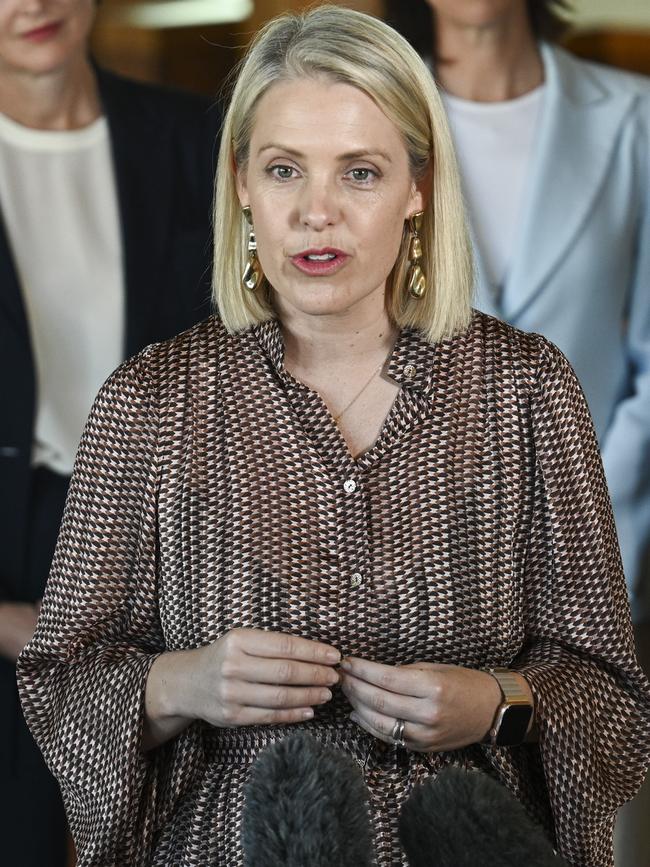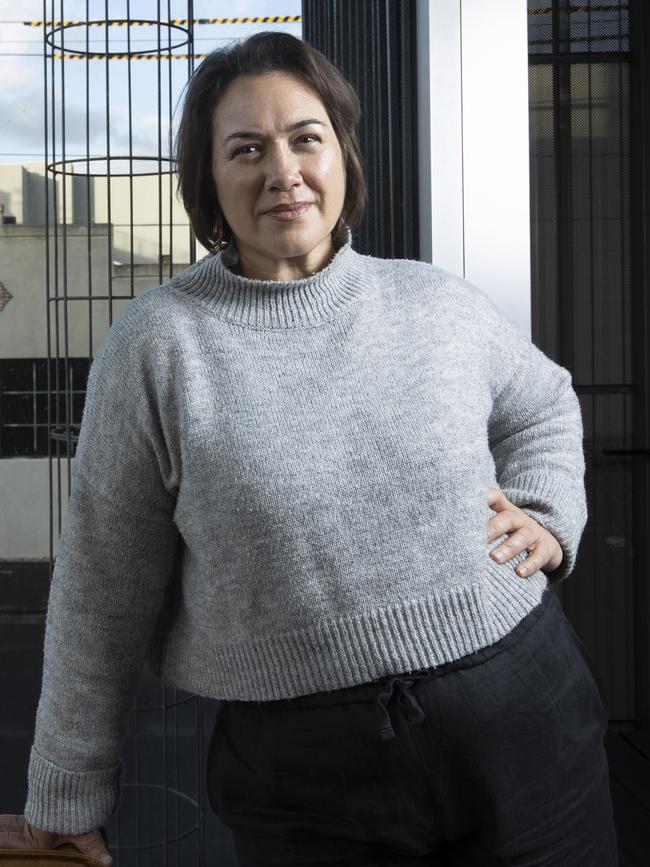Labor’s guaranteed three-day childcare subsidy explained
The three-day childcare guarantee - Labor’s signature policy ahead of the federal election - will replace the activity test. See details and if you qualify.
Kids
Don't miss out on the headlines from Kids. Followed categories will be added to My News.
The Albanese government’s hope for universal childcare came a step closer after the Senate voted to replace the activity test with a three-day guarantee of subsidised care regardless of how many hours parents work or study.
Labor was expected to take its signature policy to the federal election but was pressured to bring the commitment forward after the Greens brought on a vote.
With the election due by May 17, the Early Childhood Education and Care (Three Day Guarantee) Bill 2025 was rushed through parliament on what could be the final sitting day before Australians head to the polls.

The bill’s passing means the next step towards universal childcare will pass into law before the federal election, guaranteeing three days of subsidised childcare fee relief for about 66,700 families and extra hours for more than 100,000 families from January next year.
The Dutton-led Coalition opposed scrapping the Liberal’s activity test, which determines how much subsidised care families can access for the first three days in each week.
Here’s what you need to know.
WHAT’S CHANGING?
The current activity test – which requires each parent to work, study or look for work for at least 16 hours each fortnight before they can access 72 hours of subsidised care – will be scrapped. Instead, parents will have access to a minimum three days a week of subsidised early childhood education regardless of how many hours they spend studying or working.
WHAT STAYS THE SAME?
Families earning more than $533,280 will still not be eligible for subsidised childcare.
WHEN DOES IT START?
Families will be able to access the subsidy for children who need it from January 2026.
WHAT IS LABOR’S UNIVERSAL CHILDCARE POLICY?
In brief, Labor’s policy for a universal childcare system is aimed at giving every child aged up to five access to high-quality early childhood education and care for at least 30 hours or three days a week, for 48 weeks of the year. The new legislation is the first step in Labor’s bid for universal childcare and early education and is part of the Albanese government’s plan to establish its $1 billion Building Early Education Fund to build more centres and expand services in areas of need, including the outer suburbs and regional Australia.
WHY IS LABOR MAKING THE CHANGES?
A review by the Productivity Commission last year recommended the activity test be scrapped because it was hurting families who needed it most without leading to “substantial” increases in workforce participation. The activity test has been widely criticised for being ‘punitive’ in its requirements on parents to be in paid work or other approved activities to access a childcare subsidy with the level of government support determined by the number of hours spent doing those activities. Parents will be able to take up work for less than 16 hours a week or more without being penalised.
WHO WILL BENEFIT THE MOST?
A September Productivity Commission report found children from vulnerable, disadvantaged and/or remote communities would benefit most from early childhood education but were the least likely to attend. It said the best way to achieve this and boost attendance for low and middle-income earners was to scrap the activity test and expand funding for families earning up to $80,000 and households less than $140,000 with multiple children under five. With the changes, families earning between $50,000 to $100,000, will be better off under the three-day guarantee and are expected to save on average $1460 per year.
WILL I AUTOMATICALLY GET THE SUBSIDY?
No, as with the current system, parents will need to apply for the three-day childcare subsidy through Family and Children Services before the subsidy is paid to the childcare provider to reduce the individual cost for each child.
WHO VOTED FOR AND AGAINST THE CHANGE?
For: Senators David Pocock, Fatima Payman and Tammy Tyrrell Coalition and Senators Ralph Babet, Gerard Rennick and One Nation opposed.
WHAT HAS BEEN THE REACTION?
Terese Edwards chief of Single Mother Families Australia: “Sometimes rules get in the way of families, and the Activity Test was one of those unwanted rules. This new law represents a significant advancement in reducing the obstacles many children face when seeking early learning opportunities and reaffirms the importance of care for all families.
Catherine Liddle, chief of National Aboriginal and Islander Child Care: “When our children are and our families are supported through access to wraparound services in Aboriginal community-controlled centres, studies show we get better outcomes for those children not only in the early years, but throughout their life.”


Georgie Dent, chief of The Parenthood: “The activity test was completely misaligned with reality. At least 126,000 children, many from low-income, First Nations or single parent families, are excluded from receiving early childhood education during their most formative years, entrenching inequality and costing the government more.”
Prime Minister Anthony Albanese: “You don’t help families under pressure by pricing them out of child care; you don’t set Australia up to compete and succeed by holding children back or leaving them behind. Parents don’t need to go through a bureaucracy or work a certain number of hours to want the best possible education for their child.”
Anne Aly, minister for early childhood education: “The activity test locks out the children who can most benefit from early childhood education and care, and has not increased workforce participation. [Labor has] made significant progress in reforming the sector across those three pillars of affordability, accessibility and a sustainable workforce, towards a vision of a universal early childhood education care sector that is simple, affordable and accessible.”
Jason Clare, Minister for Education: “This is all about giving our kids the best start in life. Getting them ready for school. It’s all about opening the doors of opportunity. Peter Dutton has voted to slam it shut.”
Opposition Leader Peter Dutton: The Coalition is opposed to the change, having previously argued that subsidies should go towards working parents. Scrapping the activity test for a three-day childcare subsidy guarantee is “not something … the country can afford.”
Sussan Ley, Deputy Opposition leader: Believes the activity test is necessary to keep access “sustainable” because there were “very few places” available in childcare centres.
“We have to have that priority for working families because that’s got to be central to the actual provision of childcare.”
Senator Steph Hodgins-May, Greens early childhood education spokesman: “In a sign that Greens pressure works, Labor has been forced to back its own bill to remove the childcare subsidy activity test for three days per week. This reform is thanks to Greens, early childhood education advocates and families saying we need to get rid of the activity test and pushing Labor to act.”
Liam O’Brien, Australian Council of Trade Unions assistant secretary: “Childcare is one of the biggest expenses for a young family … The Coalition has turned its back on working parents, especially those in outer suburban and regional areas who need the extra $1,460 in fee relief and access to extra childcare hours.”




